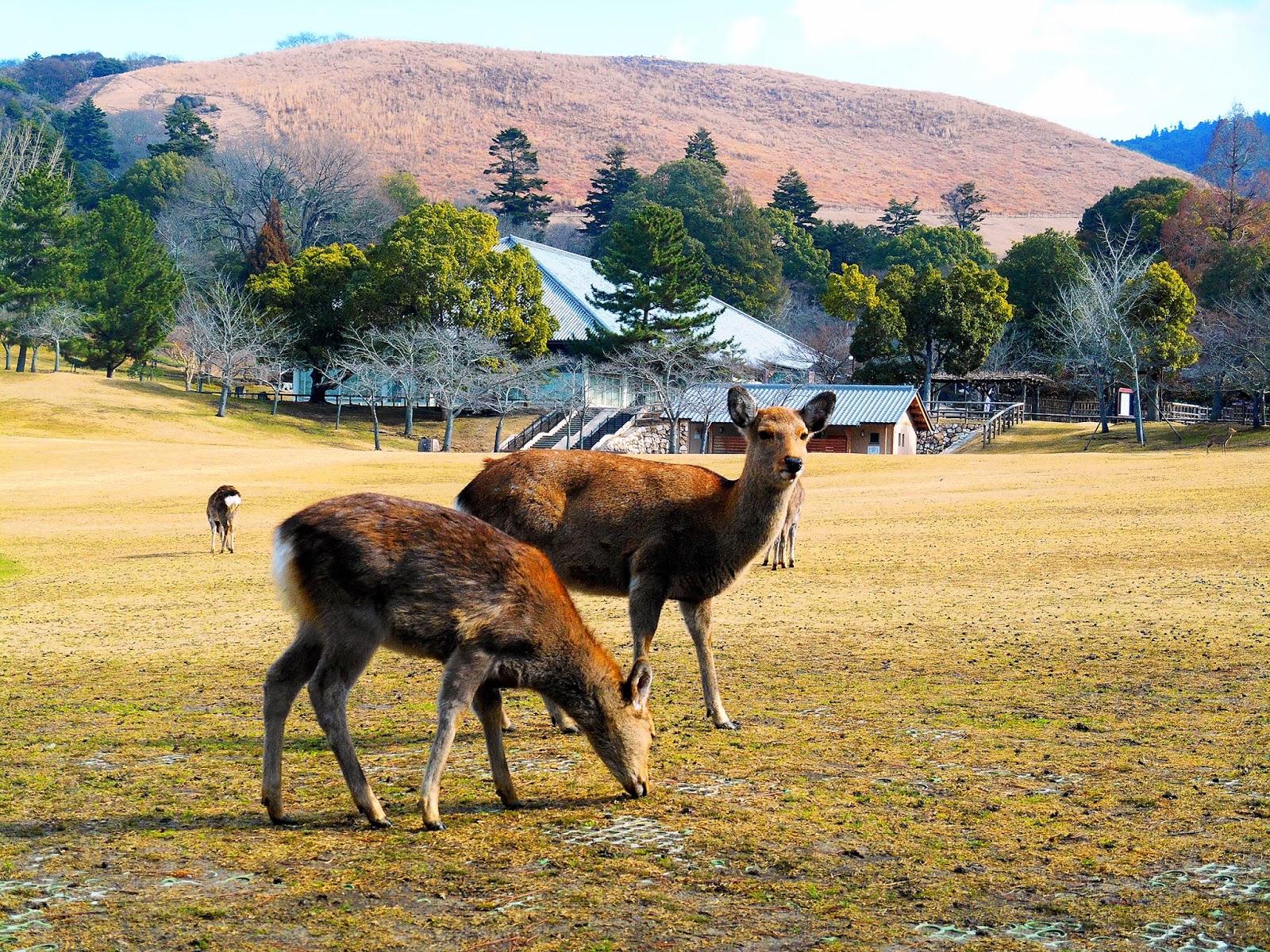Loosely translates as "Nara's Wakausa Mountain Mountain Fire-Burning Festival."
Wakakusa Mountain rises in the background.
It's held on the 4th Saturday of January, and is a tradition that dates back hundreds of years. It's origins are debatable, but two stories have emerged as the most popular.
Origin Story #1
The monks at three of the area's major temples--Kokufuji Temple, Todaiji Temple, and Kasuga Taisha Shrine--got into a big disagreement about something, and after fighting broke out they accidentally set Wakakusa Mountain on fire. After the conflagration, the monks were able to settle their differences. From then on, they would symbolically light the mountain on fire to remind themselves of this past conflict and rededicate themselves to peace.
Origin Story #2
There's an old burial mound on top of Wakakusa Mountain, and soon rumors began to spread about the angry ghosts buried there. These ghosts would wreak havoc upon the ancient capital city of Nara unless a fire was lit upon the mountain before the end of the first month of the year. Enterprising heroes kept sneaking up to the mountain each year to light fires, and the government increasingly became concerned about the fires spreading to the all-wooden city below. So,by the end of the Edo Period (~1850's), the government undertook their own formal mountain-burning ceremony; this way, they could control the proceedings and prevent the fire from getting out of control (and appease the angry ghosts at the same time, which was a definite win-win).
Festival Traditions
It's now become an almost all-day affair in contemporary Nara, and so it's pretty much impossible to escape the festive atmosphere when visiting the city on this day. Food stalls are lined up everywhere, and lots of locals hand out origami-shika-deer to visitors.
A more recent tradition at this festival is the "Giant Sembei Throwing Competition" held on the slopes of the mountain in the afternoon, from about 12:30 to 3:00. The name of the game is to throw giant versions of the deer-crackers you find throughout Nara to feed the ungulate-masses with; those who manage to throw a cracker more than 30 meters down the hill are entered into a raffle for prizes after the contest (though when I went, the wind was being so uncooperative that they had reduced the range to 20 meters). Throngs of people and deer gathered to watch from the event--though I suspect the deer were just there for the feast.
The view from the bottom of the cracker-range. And yes, the man on the microphone is wearing a deer costume.
The firefighters as they started to gather for the ceremony, easily visible with their white helmets.
Finally, a procession begins from Kasuga Taisha shrine, and the traditionally-clad monks and priests slowly work their way up to Wakausa Mountain, lighting bonfires along the way. After the main bonfire was lit, a fireworks show began (literally, it started with a bang). The fireworks lasted about 15 minutes (5 of which I filmed), and they were amazing! I had an unimpeded view of them from the spot I had camped out at pretty much all day. They were probably the most beautiful fireworks I've seen yet! My video captures just the first third of the show; as is typical of the Japanese-style of story-telling, the fireworks show worked itself up to a crescendo, and then promptly ended.
Once the fireworks were over, the firefighters took their torches from the main bonfire and lit the grass of Wakakusa Mountain. The fire spread very quickly, and took less than 10 minutes to completely burn out. It was incredible! Due to Wakakusa's elevation compared with the rest of Nara, it is possible to see the flames from pretty much all of Nara. I chose an up-close view, but I definitely recommend googling others' photographs of the event from different perspectives, because it truly is amazing.
The initial flames. You can see the silhouettes of the firefighters in front of the fire.
The fire after it was halfway up the mountain. There were just a few cinders left in the wake of where it had passed.
Miscellaneous Photos
These signs can be found everywhere, warning people of the various ways the cute-and-not-so-cuddly deer can misbehave.
Finally, a decent photograph of a pagoda-style temple.
Spotted this cute little bird hanging out on the ground. He was pretty patient as I crept closer to take some photographs of him.
Let sleeping ducks lie, right? Though how they manage to sleep comfortably while balanced on one leg is a mystery to me.
The gate to Todaiji Temple.
I noticed a few deer who thought that chain-link fences were delicious.
I briefly spent time in the moss garden in Nara. Definitely not worth the 900 yen, though. The other garden was closed, unfortunately.
The sunset that night, as seen from my view on top of Wakakusa Mountain.
A night view of Nara below the mountain. It's a very lovely city!















Comments
Post a Comment